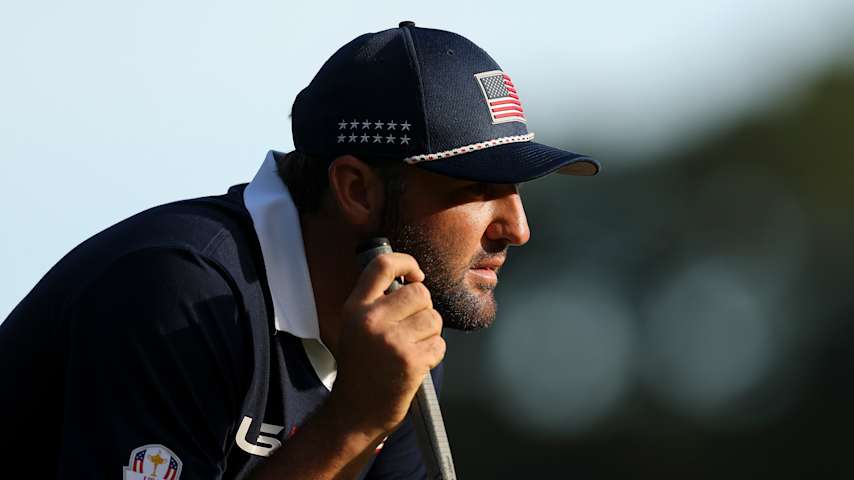Keegan Bradley on Bethpage course setup: ‘I definitely made a mistake’
3 Min Read

Highlights | Day 3 | Ryder Cup
Written by Will Gray
FARMINGDALE, N.Y. – With the U.S. facing a narrow defeat at the 45th Ryder Cup, options for assigning blame run deep. But captain Keegan Bradley chose to turn the finger-pointing inward on himself in terms of how the Black Course was set up at Bethpage State Park – an effort to give his American team an advantage that ultimately backfired in a big way.
The home teams typically have ample say in course setup when it comes to Ryder Cup venues, and that factor has played out for both teams over the last decade. At Hazeltine in 2016, the U.S. benefited from minimal rough and easily accessible pins. Two years later, the fairways were pinched in and the rough grown out in France to benefit the Europeans – a recipe they repeated two years ago in Italy.
Bethpage Black is known for its brawny difficulty – after all, there’s a warning sign at the first tee. It has hosted major championships and FedExCup Playoff events. But ahead of this week, Bradley consulted with PGA of America officials on an important setup feature: He cut down the rough, below 3 inches in some spots, in hopes of benefiting an American team he expected to have an edge off the tee.
Instead, rain on Thursday that altered the schedule for opening ceremonies softened the course, and the moisture underfoot never dissipated all week. Neither team faced a penalty for wayward drives, but long hitters like Rory McIlroy and Jon Rahm were able to capitalize as much, if not more, than the Americans on a course that began handing out birdies by the handful.

Rory McIlroy plants wedge for birdie at Ryder Cup
“We tried to set the course up to benefit our team. Obviously, it wasn’t the right decision,” Bradley said. “I definitely made a mistake on the course setup. I should have listened a little bit more to my intuition. For whatever reason, that wasn’t the right way to set the course up.”
Throughout the week, Bradley shared that the greens at Bethpage were as soft as he’s ever seen them despite a relatively small amount of rain. On Saturday, he went as far as to say that on certain holes his players were better off in the rough than the fairway: With approaches from the short grass sometimes spinning back dozens of feet on spongy surfaces, he found that the benefit from a lack of spin out of the rough outweighed the downside of being off-line.
But the greens were as slow as they were soft, and while the Europeans were pouring in putts for much of the week, the Americans didn’t find their footing on the greens until it was too late Sunday afternoon. Knowing better than most the nuance of the Black Course’s naturally penal nature, Bradley admitted that the course setup – and the rough height, specifically – was one area where he wanted a mulligan.
“Sometimes you’ve got to make a decision on what to do, and you know, if I could go back, I probably would have changed that,” Bradley said. “But the Europeans played just incredible golf. Doesn’t matter how you set the course up when you play that well.”











